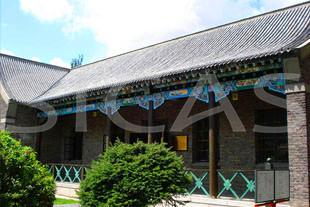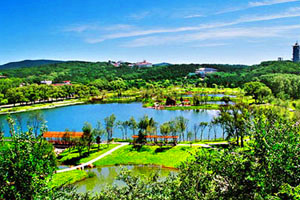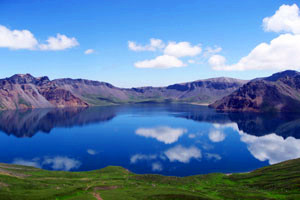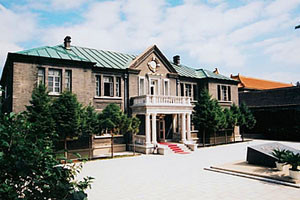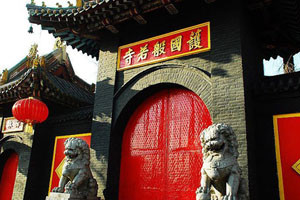 |
Jingyuetan National Forest Park
Puppet Emperor's Palace
The palace consists of the inner and outer courts, with the former as the living quarters for Puyi and his family, while the latter was where he conducted his political activities. In addition there are waxen statues mirroring historical figures in the palace to help people understand the puppet emperor's political and daily life. Now it has become a national excellent base of patriotic education and national AAAA scenic spot. Location: No.5 Guangfu Road, Kuancheng District, Changchun Entrance Fee: RMB 40Opening Hours: 08:00-18:00 Transportation: Take Bus No.80, 264,225,114,256,276 or 287.
Jingyuetan National Forest Park
This national park is famous for its picturesque scenery; therefore it is revered as 'a tranquil place in a blatant city'. In winter it is attractive due to white snow and in summer to the coolness. It is a collection of lakes, trees, mountains and fields. The area of pool water is 4.3 square kilometers. The water is as clear as a mirror. The whole scenic spot is divided into scenery of water in the west, that of mountains in the north, that of trees in the south and that of fields in the east. Changbai Mountain
During the period of which from June to September, hundreds of flowers blossom on the Southern and Western slopes. It is very cool in Changbai Mountain, so it's an ideal place for escaping from the summer heat. But it is also very rainy in July and August, and visitors cannot watch the Heavenly Lake clearly at that time. The best time to visit Changbai Mountain is September. Generally, it snows from October. The best time to view snow and to ski is from November to March. Ice and snow begin to thaw from April, but visitors can still find snow even in May. South Lake Park 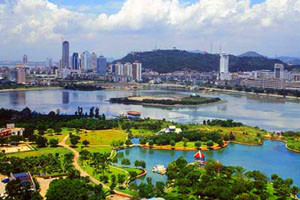 Nanhu Park is situated in the south part of the city, it is the largest park in Changchun. It was built in 1933. The lake water is very clear. There are willows along the bank of the lake. Birds, flowers, arched bridges and pavilions can be seen in the park. If one stands on the Bridge of South Lake and gazes at the north, one will see a colorful picture, which looks like flowing flowers blooming on the surface of the water. When it is warm, one can go fishing, boating and swimming; when it is cold, one can go skiing, skating and watch sculptures made of ice. In midsummer and early autumn of every year there will be lights festivals and other kinds of activities involving folk customs. The cold winter period is the high time for Nanhu Park. Various kinds of activities, especially sledges pulled by dogs or camels, will give you a chance to taste a real winter and feel genuine happiness.
The Jilin Provincial Museum
Furthermore, the museum exhibits glorious stories of Chinese heroes during the Anti-Japanese War (1937 - 1945). The heroes struggled courageously against Japanese aggressors in northeast China and sacrificed their lives for the liberation of their motherland. These stories reflect a sublime and unyielding spirit.
Changchun Bore Temple
Today, Bore Temple covers 14,000 kilometers. The designs of the bell tower in the east and the drum tower in the west are unique, and highly skilled. In case of important occasions, bells and drums will resound to the skies. The whole temple consists of three layers. The first layer is the Maitreya Hall, in which sits the Statue of Maitreya. In front of it there is a white marble tablet which records the detailed building process of the temple. The second layer is the Daxiong Hall, it is the biggest building and is the center of the temple. The third layer is the West Three Saints' Hall, a two-layered architect, the upper of which is a tower with scriptures hidden, the lower of which consecrates the statues of the Maitreya, Dashizhi Bodhisattva, and Guanshuyin Bodhisattva. |








